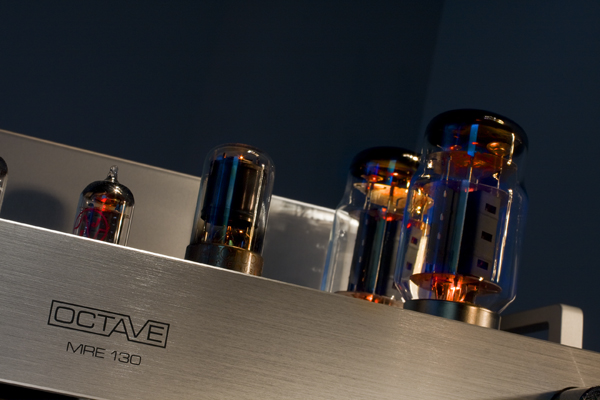 Merely mentioning that you still listen to vinyl records in casual conversation amongst non-audiophiles almost always invokes a raised eyebrow. And if you try to explain the thrill of vacuum tubes, people that don’t give you a dog-like stare will surely move you to the penalty box. But as vacuum tube fans know, current designs continue to advance like the Energizer bunny, with the best examples light years ahead of the humble beginning of the Williamson circuit from the 1940s. In 1955, the Heathkit version of the original circuit claimed to have “performance far beyond the finest speaker systems available.” Much has improved since then.
Merely mentioning that you still listen to vinyl records in casual conversation amongst non-audiophiles almost always invokes a raised eyebrow. And if you try to explain the thrill of vacuum tubes, people that don’t give you a dog-like stare will surely move you to the penalty box. But as vacuum tube fans know, current designs continue to advance like the Energizer bunny, with the best examples light years ahead of the humble beginning of the Williamson circuit from the 1940s. In 1955, the Heathkit version of the original circuit claimed to have “performance far beyond the finest speaker systems available.” Much has improved since then.
Hailing from Germany, the Octave MRE 130 monoblocks look straightforward in terms of aesthetics. But they’ve also combined a few unique features, along with meticulous attention to detail, to create a pair of power amplifiers that sit at the top of their class. The standard MRE 130 monos run $16,000 per pair, and thanks to external power supply modules ($7,500 additional per pair), allow for the option of taking their stunning performance even further.
The most distinctive aspect of these amplifiers is the substantial redesign of the classic pentode amplifier circuit. The first part of the Octave approach is its power management system, which not only provides a soft start for the tubes, but also furnishes a separate supply that is optimized for the input stage—as well as another for the output stage and a third section that takes care of the additional current requirements of the pentode circuit. In addition, an electronic protection circuit protects the amplifier from damage, should tube failure occur while remaining audibly transparent.
While Octave has only been distributed in the United States for a few years, the company began in 1968 when founder Andreas Hoffman’s father began a transformer-winding factory in Germany. Hoffman started building solid-state amplifiers in 1975 and turned his attention to tubes in 1977. In the years that followed, his products won numerous awards in Europe and Asia.
The MR 130 amplifiers are rated at 100 watts per channel into an 8-ohm load and 130 per channel into 4 ohms. Available in silver or black, the MR 130s are substantial at 46 pounds (22.7kg) each, but not so heavy that they need more than one person to lift.
Setup
Removing the tube cage reveals a complement of two 12AU7s (ECC82C) and a 6C5 as driver tubes, with a quartet of 6550s for the output stage. They can also be configured with KT88s. The review pair came with KT88s installed, and Octave was thoughtful by including two spare power tubes. The company should also be praised for producing one of the most comprehensive and well-written manuals in the industry. It offers background on the design, a thorough explanation of how to properly bias the tubes, and finally, for the technically inclined, measurements. Hoffman has indicated that future versions of the MRE 130 have been slightly modified to ship with a 6SN7 in the place of the 6C5, to make it easier to find replacments, but assured me that there is no change in sound.
Once the tubes are installed in their respective sockets, the output tubes need to have proper bias set. Five LEDs indicate bias status. A middle green LED indicates correct bias, while a yellow one to the left of center glows with an underbias situation and a yellow one to the right indicates overbias. An orange LED all the way on the far left is used when installing a fresh set of tubes. Finally, a red LED on the maximum far right position only lights when a tube is defective.
The remainder of the setup is straightforward, with two pairs of easily accessible speaker binding posts and a pair of RCA and XLR input sockets. Input type is selected via a switch, and the inputs can be shorted as well, so you can change cables without causing amplifier or speaker damage. XLR connectors are offered, but the amplifier is not fully balanced, as Hoffman doesn’t feel that it’s a superior way to design a tube amplifier.
Although the manual states that output tubes can take “up to 300 hours to sound their best,” my review samples had just come from the Rocky Mountain Audio Fest, where they had about a week on the clock. I did not hear a change in amplifiers’ sound character during the test period, other than that of initial warm-up. The MRE 130s require about 45 minutes to sound their best.
It’s also worth mentioning that an output tube failed during the course of this review, and while such an episode may have caused drama with other amplifiers, the MRE 130 simply went quiet. The corresponding red LED lit up to indicate the defective tube. Once the latter was replaced, the MRE 130 went back to performing flawlessly.
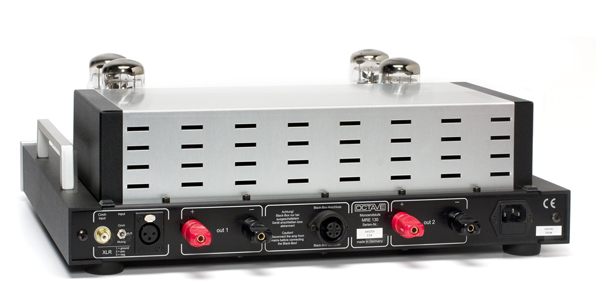 Listening Impressions
Listening Impressions
Beginning with a handful of audiophile classics, I was instantly struck by the soundstage depth and fine detail offered by the MR130s. The LP of the Fleet Foxes’ debut encapsulated such characteristics, keeping the band members’ harmonies wonderfully separated. And the title track from the new Fleet Foxes record, Helplessness Blues (reviewed this issue), proved quite a treat as well. The heavily layered vocals were easy to pluck from the main musical line, as they floated above and in front of the big bass drum in the background.
John Fogerty’s version of “I Put a Spell on You” from Creedence Clearwater Revival’s self-titled album (45RPM Analogue Productions version) proved equally captivating. Shortly thereafter, the band’s “Suzie Q” equated to retro treat, with the lead guitar distinctly defined in the far left channel, full of glorious distortion as Fogerty chimed in and out of the right channel. Yet the bass guitar sounded diffuse, hanging back behind the performers. It was as if bassist Stu Cook was off playing in another room.
While most tube amplifiers impart a glorious sense of pace and a generous measure of air, they usually falter in the area of bass control. But the MRE 130s did not fall victim to the common problem that plagues all but the world’s best tube amplifiers— proof that Hoffman’s power-supply design is highly successful. The funky bass lines in George Michael’s “Hard Day” from Faith arrived with just the right amount of weight and grip, and without losing control. Keep in mind that this song usually overwhelms most tube amplifiers and ends up boomy.
I was equally impressed with the deep bass performance of the MRE 130s when grooving to George Clinton’s “Why Should I Dog You Out?” from The Cinderella Theory. If you have speakers capable of delivering major low-frequency extension, the MRE 130s will step up to the plate. Depth and dimension were definite specialties of the MRE 130s even if they weren’t the equivalent of my Burmester 911 mk.3s. But the Octaves were about to make some big performance gains.
Increasing Performance: Step One
Users not interested in experimenting with different tube configurations will enjoy the MRE 130s as outfitted at the factory. However, if you are a maniacal tube enthusiast that always searches for more performance, rest assured that more is on tap. Towards the end of the review period, the new KT120 power tubes were released. And while this model isn’t a plug-in replacement for every amplifier that utilizes 6550 or KT88 tubes, Hoffman assured me that the MRE 130s’ power supply was up to the task of this particular tube’s increased current demands.
Hoffman also claims that, without redesigning the amplifier, it really won’t produce much more power than with the stock KT88 tubes. Yet, with the KT120s installed, the sound quality tremendously improved on both ends of the frequency spectrum. Bass became deeper and tighter, with even better control than before. The MRE 130s already exhibited some of the most controlled bass I’ve ever heard from a tube amplifier, and with the KT120s, they offer even more grunt.
At the other end of the spectrum, more air circulated around cymbals than before. Heading back to the CCR catalog, the high hat cymbals seemed to float better while the overall sound achieved a heightened level of refinement. Acoustic instruments became fleshed out with more body; the more complex sounds of the violin and piano took another step towards reality. Originally recorded to two-track 30 i.p.s. tape, Liz Story’s Steinway on her Solid Colors LP suspiciously sounded like the one in my living room. The amplifiers did an excellent job of letting me just forget about the gear and get lost in the musical presentation.
While the MRE 130s came with a pair of JJ ECC82s (12AU7) installed in each unit, swapping them out for the new Pvane 12AU7s from Shunuang yielded more delicacy. Substituting your favorite NOS tube may change the tonal character of the amplifier, but the new Pvane tubes did not alter tonality. They simply dropped the noise floor of an already very quiet tube amplifier even further, and peeled off a layer of grain that I didn’t previously know existed. If you do nothing else to your MRE 130s, I highly suggest making this small change.
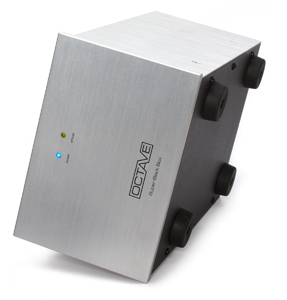 Step Two: Adding the Big Black Boxes
Step Two: Adding the Big Black Boxes
After becoming thoroughly familiar with the MRE 130s in their stock form and then again with upgraded tubes, another big performance jump came via the Super Black Box, which incidentally, is silver. While a pair of Super Black Boxes add $7,500 to the MRE 130s’ price tag, the improvement is major—and well worth it. As you might suspect from such a substantial upgrade, the soundstage immediately became larger in all three directions, the upper register had more clarity, and the bass possessed even more heft and control.
Whereas Naim gives you the opportunity to add a completely different power supply, the Octave Super Black Box is a giant capacitor bank tethered to each amplifier by a massive power cord and connector. Once powered up, the Super Black Box has a blue status indicator—just like the power amplifier. Should you feel the need to disconnect them, a yellow LED glows for approximately two seconds, indicating the discharge. Hence, you will not be exposed to any harmful voltage when unplugging them.
Digging through deep tracks to locate old-school synthesized bass, I dusted off Edgar Winter’s Jasmine Nightdreams. The second cut, “Little Brother,” has a fairly loose and whumpy albeit powerful bass line that was much more agreeable with the Super Black Boxes in place. The song lost some looseness but not the character of the bass. I discovered the same effect when playing “Word Up!” from Korn’s Greatest Hits, Vol.1. The driving bass line attained more authority and punch than before, an experience that led me to revisit most of the initial tracks I used to determine the MRE 130s’ character. A definite transformation.
Still, the improvements afforded by the Super Black Box went beyond bass performance. The three-dimensional aspect of the presentation increased to the point that I felt as if I were listening to surround sound. Kraftwerk’s Tour de France took on an uncanny sense of depth that normally requires an analog source to achieve. I found myself listening start-to-finish to several albums in the digital format that I normally experience one or two tracks at a time before moving on. The MRE 130s’ resolution healthily expanded, as did the jump in dynamic range.
Hoffman also told me that one of the side benefits of additional power-supply capacity lowered the amplifier’s output impedance, which accounts for its spectacular bass performance. Such extra capacity also gives the MRE 130s’ the ability to more easily drive difficult loads. I had no problem driving my MartinLogan CLX speakers or the Magnepan 1.6s, each notoriously tough to drive with tubes. Without the Super Black Boxes in place, the MRE 130s ran out of juice with the Magnepans and rolled off the highs with the CLXs. This upgrade is a must if you plan on using these amplifiers with either speaker.
Before adding the upgraded tubes and Super Black Box, the MRE 130s took a back seat to my Burmester 911 Mk. 3 monoblocks in terms of imaging and delicacy. But, after I made the changes, the Octave units held their own in these areas when played within their limits—very impressive for a pair of amplifiers that cost one-third as much as the Burmester gear.
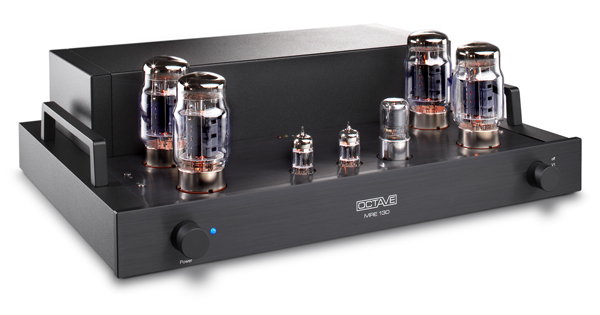 Conclusion
Conclusion
While I can’t imagine using the Octave MRE 130s without the Super Black Boxes now that I’ve had the experience, they are fantastic amplifiers without the add-ons, and Octave is to be commended for giving the end user the opportunity to work their way up to a statement product.
The Octave MRE 130 monoblocks should satisfy all but the most power-hungry systems. If 130 watts per channel is not enough, Octave also produces floor-standing Jubilee monoblocks, which we will audition in the near future. If you’ve always wanted the benefits of tube amplification without any of the drawbacks, these amplifiers are for you.
Octave MRE 130 Monoblock Amplifiers
MSRP: $16,000/pair; Super Black Box: $7,500/pair
Manufacturer Information:
www.octave.de
Peripherals
Analog Source AVID Acutus Reference SP w/SME V and Koetsu Urushi Blue
Digital Source dCS Paganini (4 box stack), Sooloos Control 15
Phono Preamplifier ARC REF Phono 2, Octave Phono Module
Preamplifier Burmester 011, McIntosh C500
Speakers GamuT S9, MartinLogan CLX, Magnepan 1.6, B&W 805D
Cable Cardas Clear
Power Running Springs Maxim and Dmitri power conditioners, RSA and Shunyata power cords
Accessories Furutech DeMag, SRA Ohio Class XL+² equipment platforms, Loricraft PRC -2 record cleaner



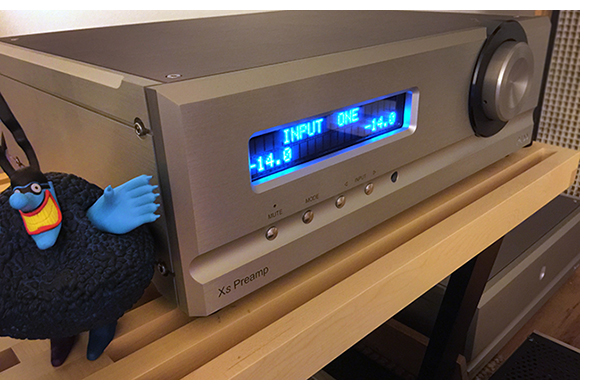
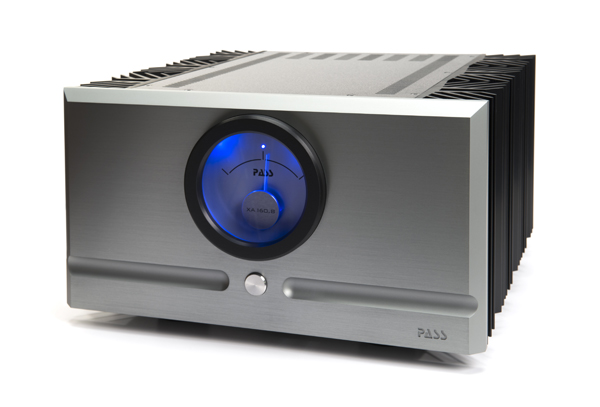
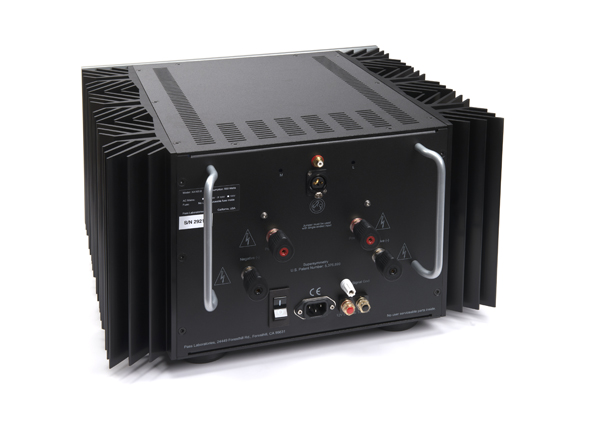
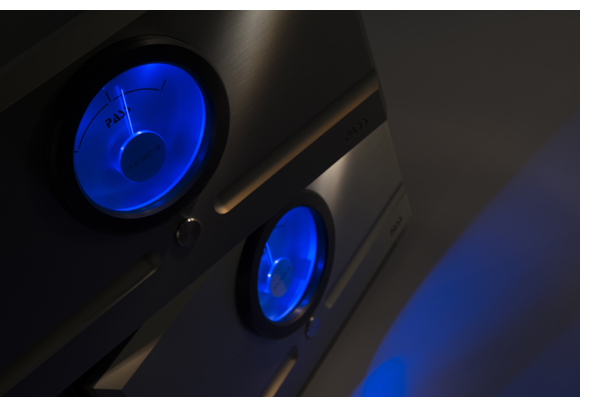
 The Digital Amplifier Company—founded in 1996 and located in Allentown, Penn.—solely produces hyper-engineered, audiophile-grade Class-D amplifiers. Its products output plenty of power from manageably sized and attractive packages. The company’s Cherry line comprises stereo and monoblock variants, which are available in standard or higher-output Ultra configurations.
The Digital Amplifier Company—founded in 1996 and located in Allentown, Penn.—solely produces hyper-engineered, audiophile-grade Class-D amplifiers. Its products output plenty of power from manageably sized and attractive packages. The company’s Cherry line comprises stereo and monoblock variants, which are available in standard or higher-output Ultra configurations.
















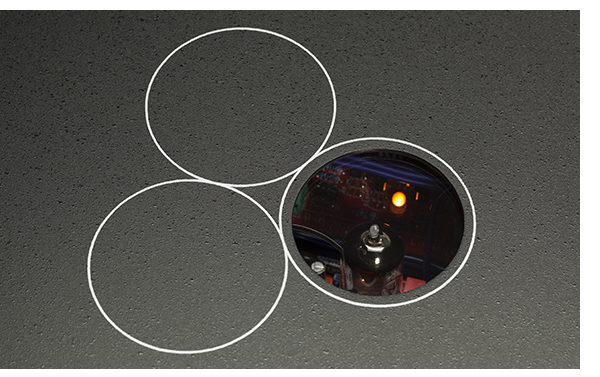
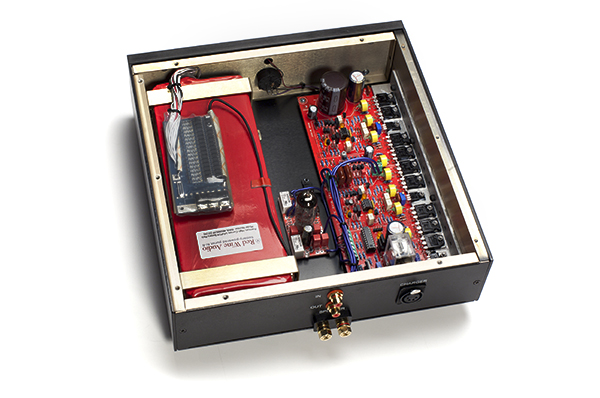 Grain free sound
Grain free sound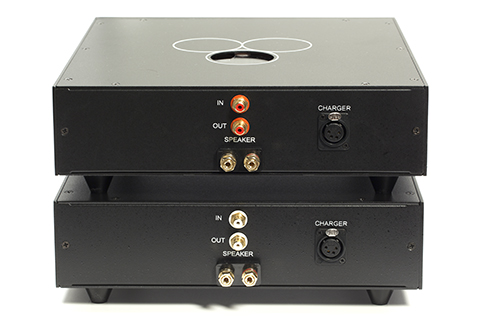 At the edge
At the edge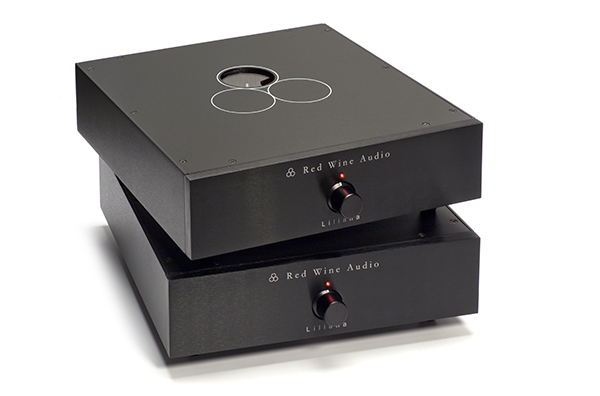 A sound choice
A sound choice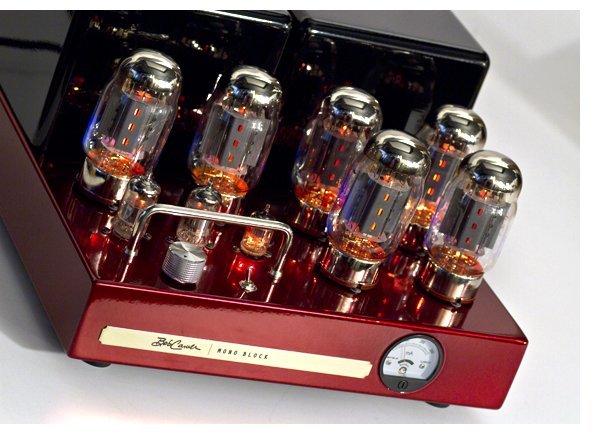 Throughout his career, Bob Carver has made several legendary products and, like most great artists, stirred up controversy in the process. His new line of tube amplifiers aren’t just brilliant, they’re reasonably priced. For those wanting the “Made in America” badge, these crimson beauties—along with every other Carver amplifier—are built by hand in Lexington, using point-to-point wiring techniques.
Throughout his career, Bob Carver has made several legendary products and, like most great artists, stirred up controversy in the process. His new line of tube amplifiers aren’t just brilliant, they’re reasonably priced. For those wanting the “Made in America” badge, these crimson beauties—along with every other Carver amplifier—are built by hand in Lexington, using point-to-point wiring techniques.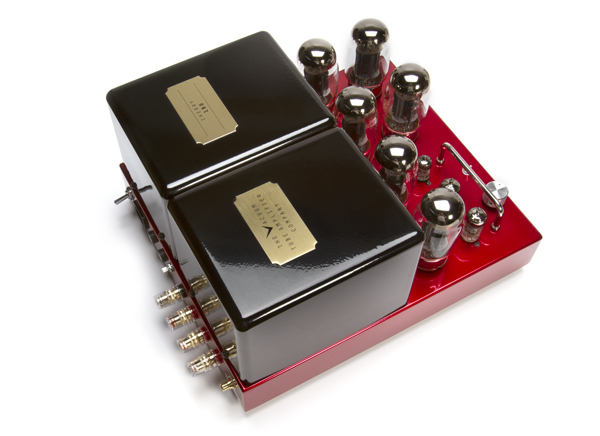 The Whole Enchilada
The Whole Enchilada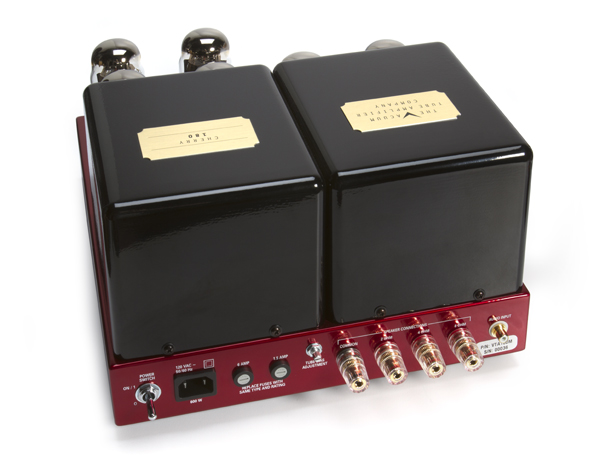 Award Winning Performance
Award Winning Performance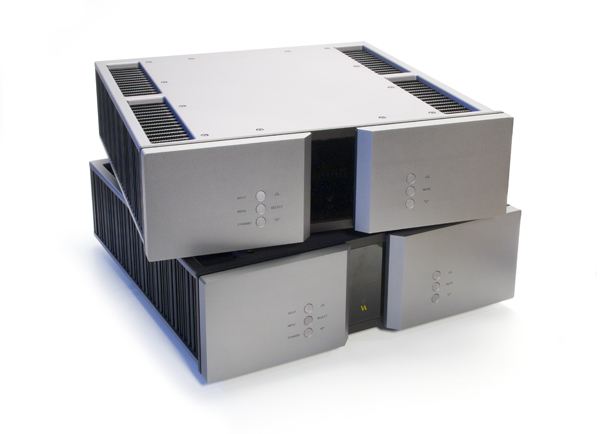 Everything Hans-Ole Vitus makes is heavy. Really fucking heavy. Break-your-back heavy. But those who possess the strength to lift his SM-010 monoblocks out of the boxes will be rewarded with fantastic sound. That said, it’s become very popular of late, at least in the United States, to take shots at the wealthy and, in particular, at luxury goods. So if the idea of a $40k pair of amplifiers seems offensive, let fly the invective and take a pass.
Everything Hans-Ole Vitus makes is heavy. Really fucking heavy. Break-your-back heavy. But those who possess the strength to lift his SM-010 monoblocks out of the boxes will be rewarded with fantastic sound. That said, it’s become very popular of late, at least in the United States, to take shots at the wealthy and, in particular, at luxury goods. So if the idea of a $40k pair of amplifiers seems offensive, let fly the invective and take a pass.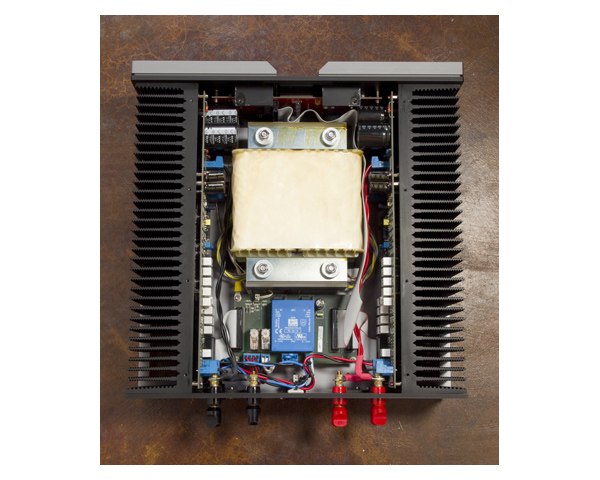 Flick of the Switch
Flick of the Switch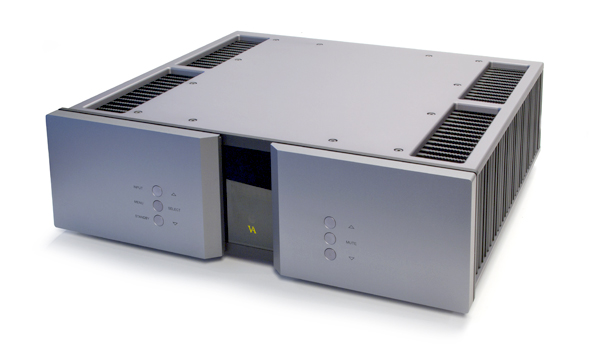 Not Just Another Brick in the Audio Wall
Not Just Another Brick in the Audio Wall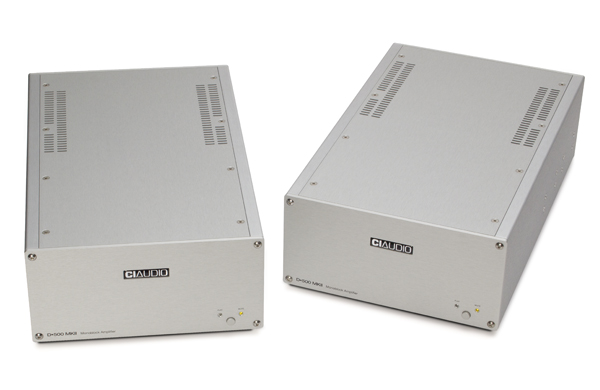 Early class D amplifiers resemble the first efforts at CD players; a great idea that wasn’t fully realized on the first iteration or two. If you’ve been around long enough to remember just how bad those first CD players sounded, you’ll probably agree that the first class D amplifiers offered up the same aural aesthetic, sounding two dimensional, somewhat shrill on the top end and fatiguing after a short period of time.
Early class D amplifiers resemble the first efforts at CD players; a great idea that wasn’t fully realized on the first iteration or two. If you’ve been around long enough to remember just how bad those first CD players sounded, you’ll probably agree that the first class D amplifiers offered up the same aural aesthetic, sounding two dimensional, somewhat shrill on the top end and fatiguing after a short period of time.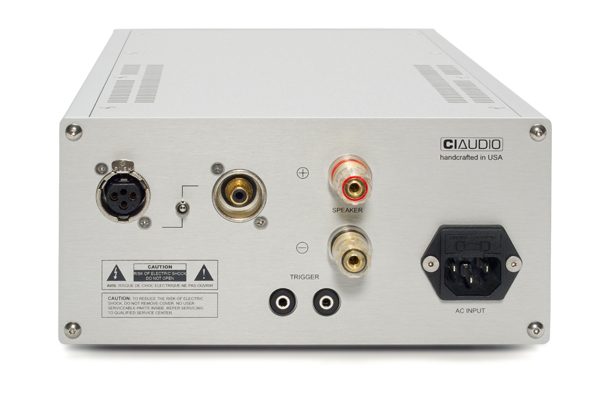 Preamplifier Compatibility
Preamplifier Compatibility Merely mentioning that you still listen to vinyl records in casual conversation amongst non-audiophiles almost always invokes a raised eyebrow. And if you try to explain the thrill of vacuum tubes, people that don’t give you a dog-like stare will surely move you to the penalty box. But as vacuum tube fans know, current designs continue to advance like the Energizer bunny, with the best examples light years ahead of the humble beginning of the Williamson circuit from the 1940s. In 1955, the Heathkit version of the original circuit claimed to have “performance far beyond the finest speaker systems available.” Much has improved since then.
Merely mentioning that you still listen to vinyl records in casual conversation amongst non-audiophiles almost always invokes a raised eyebrow. And if you try to explain the thrill of vacuum tubes, people that don’t give you a dog-like stare will surely move you to the penalty box. But as vacuum tube fans know, current designs continue to advance like the Energizer bunny, with the best examples light years ahead of the humble beginning of the Williamson circuit from the 1940s. In 1955, the Heathkit version of the original circuit claimed to have “performance far beyond the finest speaker systems available.” Much has improved since then. Listening Impressions
Listening Impressions Step Two: Adding the Big Black Boxes
Step Two: Adding the Big Black Boxes Conclusion
Conclusion










